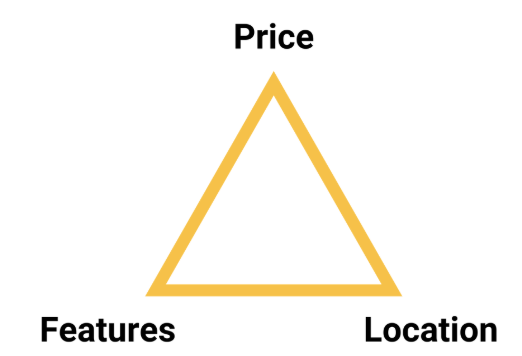
Assessing Your Needs
Buying a home is an exciting journey, but with so many things to consider, making decisions can feel overwhelming. To make the process easier, it helps to focus on 3 key factors when shopping for a home and understand how they influence each other:
Price
Price is often the most critical factor when shopping for a home, as it directly impacts your budget, mortgage payments, and overall financial comfort. It’s important to determine your price range early in the process and stick to it, factoring in additional costs like property taxes, HOA fees, and maintenance. However, it’s also essential to understand that price is closely tied to both location and features. A home in a prime location with excellent features will naturally have a higher price. Lower-priced homes often require trade-offs, such as choosing a less desirable location or a property that needs updates.
Location
In real estate, “location is everything,” and it significantly influences a home’s price, your lifestyle, and its long-term value. Proximity to work, schools, and daily destinations is crucial, as are neighbourhood amenities like parks, shops, restaurants, and public transportation. Safety, the area’s reputation, and potential for future growth also play a major role. Homes in desirable locations may cost more, even if they’re smaller or need updates, while expanding your search to nearby neighbourhoods could help you find better value. Location often holds the most lasting investment potential, so even if a home requires some upgrades, being in the right area can make it worthwhile in the long run.
Features
The features of a home—such as layout, finishes, and amenities—determine how well it suits your needs and lifestyle. Features like the number of bedrooms, bathrooms, and overall layout are essential “must-haves,” while extras like a pool, a gourmet kitchen, or smart home technology might fall into the “nice-to-have” category. Homes with updated features tend to cost more and may be located farther from prime areas, while older properties with fewer upgrades can often be customized to your liking but require more time and money. It’s important to prioritize features that align with your lifestyle. For example, if you love entertaining, focus on open layouts and spacious kitchens, whereas low-maintenance options like condos might be better suited for busy schedules.
How to Use the Pricing Triangle to Your Advantage
By focusing on what matters most to you—whether that’s being in a specific neighbourhood, having a move-in-ready home, or staying within a certain budget—you’ll be better equipped to make confident decisions. Here are a few tips to help you navigate:
Set Clear Priorities
Ask yourself: What’s non-negotiable for me? Is it location, size, or budget? Knowing this will help you weigh the trade-offs effectively.Explore Different Options
Keep an open mind and explore homes that may not check every box but align with your top priority. For example, if location is key, look at homes that need a little work—it might be worth it in the long run.Leverage Expert Advice
Having a trusted real estate professional by your side can help you spot great opportunities and make sense of pricing in today’s market.

